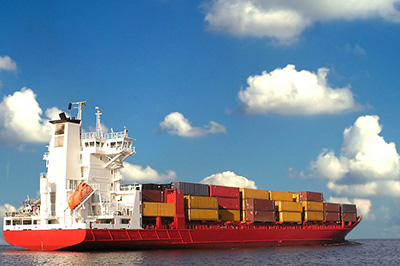Moore on Pricing: The New Silk Road and other ocean challenges
The ocean cargo industry continues to be in turmoil, with some spot rates inching up countered by still more capacity tempering rate hikes in many key lanes.
The ocean cargo industry continues to be in turmoil, with some spot rates inching up countered by still more capacity tempering rate hikes in many key lanes. In this new reality, shippers need to continue to pay attention to changes in competition, capacity, technology and ownership.
With the introduction of through-rail freight service between eastern China and London called The New Silk Road, the Chinese have openly challenged the increasingly consolidated ocean freight industry with a serious and faster alternative. In fact, door-to-door in a little over two weeks is a happy medium for products requiring time-definite service without the expense of air cargo.
Why 7,500 miles in 18 days and not faster? The New Silk Road, like its ocean competitors, will make multiple interim stops—meaning it could and will be getting faster as scheduling and density improves.
I’ve previously mentioned in this column the expansion of both rail and intercoastal water capacity in North America. New double stack trains and deeper harbors for larger vessels are increasing the capacity offered to shippers to move freight in this manner. The introduction of a serious competitor across the United States or across Asia and Europe would only help shippers to limit rate increases.
Capacity growth in ocean vessels in 2017 will be higher than 2016, but still moderate at around 3%, according to the Baltic and International Maritime Council (BIMCO). If there are any setbacks in economic growth, shippers can expect a scramble for their cargo in order to fill larger ships.
There are already ocean rate increases reported in some markets and softness in others, due in large part to ownership changes. It’s suggested that shippers delay finalizing rate agreements where possible to see where the market for their lanes settles out.
In the meantime, technology continues to drive change. North American buyers are insisting that foreign suppliers be in compliance with strict importation and inspection rules, meaning more digitized documentation, predictability and pre-registration to reduce friction at customs control points. Shippers and their 3PLs need to step up their games in this area or be left waiting at the docks.
As previously reported in Logistics Management, vessels are being equipped with new power units, directional thrusters, as well as fuel and labor saving devices. The idea of an autonomous ship sailing continuously around the globe with self-repairing artificial intelligence is moving from science fiction to a port near you.
When you roll up the facts, the consolidation of the ocean industry mirrors what’s happening on the rails, in the air, and in the trucking and barge industries. Every attempt will be made by carrier owners to gain leverage over major freight lanes so that prices can be “stabilized” by slow steaming, capacity limitations and lane balancing without fear of a serious competitor pushing down rates.
Shippers saw the effect of this in the relentless increases in less-than-truckload, parcel and rail rates in the United States as those industries were reduced to a few players. Today, shippers should be paying attention to consolidations in the EU and Asia as investments in expensive technology, regulatory compliance costs and skilled labor continues to marginalize smaller service providers.
Despite the growth of capacity, shippers have to find a way to have predictable, competitive rates on a year-to-year basis. One option for large shippers, such as Amazon, is by owning/leasing capacity. This has evolved from locking in space on vessels and aircraft to operating entire fleets.
A second option is by joint action by groups of small and medium shippers in associations. This is increasingly seen as an option despite the historic taboo on joint buying—cartels—in the market. This means more education on import/export, technology and international operations are needed for the average shipper. In the meantime, I’m still hearing too many shippers say that they “leave all those details to their forwarders.” I say: Ignore at your own peril.













